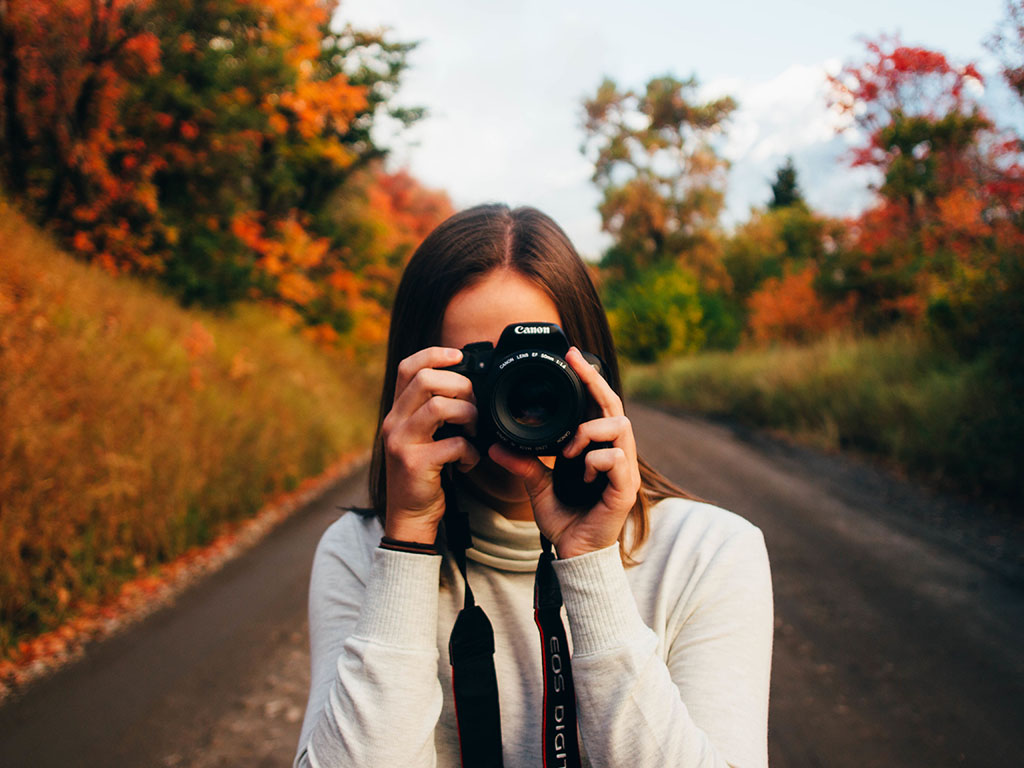
The rise of the smartphone has had a profound effect on society, in a number of different ways, but one of the most dramatic changes is in the way we create, share and consume photography. It’s hardly surprising to learn that we are taking way more photographs than at any other time in our history, somewhere in the region of a trillion per year, and that’s a conservative estimate. It’s possible that more photos will be taken in 2016 than were ever taken by film cameras. That’s kind of astonishing, isn’t it?
Are we taking better photos?
Despite the fact that many of us are practising photography on a regular basis, I wonder if we’re actually trying to hone our photography skills, to make better, more effective images. In my experience, the answer is no, and I can’t help but to wonder why this is. Perhaps it’s because smartphone users draw a subconscious distinction between ‘taking pictures’ and ‘real photography’.
I’m a person who loves to learn new things, especially practical skills. There’s nothing I like more than to talk to someone who has deep knowledge in a specific field. If I think you can teach me something, be prepared for a lot of questions! I’m also happy to share whatever knowledge I may have because I find it really satisfying to feel that I’ve helped someone else to a better understanding. You also learn a lot by teaching what you know, and often you learn what the gaps in your knowledge are.
Funnily enough, I don’t find myself answering as many questions on photography as you might expect from my smartphone-toting acquaintances. Maybe people are a little bit intimidated because there’s a misconception that photography is a very technical pursuit. It can be, that’s true, but it doesn’t need to be, and much of the best advice I can give is very simple and straightforward, and not at all technical.
Beautiful light makes beautiful photographs
I’ve often mentioned in past articles the importance of light in photography. Without light, there is no photography. And the quality of light available to us when we make a photograph has a very direct impact on the quality of the image we can make. If we have beautiful light, we’re already half way to making a beautiful image.
This is the fourth article in the ‘Become A Better Photographer’ series. The first article was entitled ‘Only Shoot At Sunset’ and the premise behind that piece was that the light that happens around sunset (or sunrise) is the most interesting light you’ll find, anywhere. Today I want to offer a simple piece of advice that you can apply anytime you’re taking a photograph. Just ask yourself ‘Where is my light source?’.
Move your subject
In a studio setting, photographers make very conscious decisions about where to position their lights for maximum effect, but in the real world, we’re often working in situations where we can’t change the position of the light. What we can do however, is change the position of our subjects.
 One of the best sources of light you’ll come across on a regular basis is a plain old window. North-facing windows are best (in the Northern Hemisphere) because the sun never hits them. Direct light from the sun can be really harsh and tricky to work with, and for this reason I generally advise to avoid it.
One of the best sources of light you’ll come across on a regular basis is a plain old window. North-facing windows are best (in the Northern Hemisphere) because the sun never hits them. Direct light from the sun can be really harsh and tricky to work with, and for this reason I generally advise to avoid it.
If you want to make a really strong portrait just position your subject (or yourself, if it’s a selfie) at a 45 degree angle to the window. You’ll notice the beautiful, soft and flattering light that sets a really nice mood for your image. You’ll also see great catchlights in your subjects eyes, those little reflections that add a real vitality to your portrait.
One of the common mistakes I see is where people take a photo of someone with their back to a window. In this case, you’re actually photographing towards your light source, with the result that not enough light is falling on your subject, and you end up with a silhouette where the features are very hard to make out.
Tricky indoor light
Even if you don’t have a source of natural light, you can always figure out what the strongest source of artificial light is and either angle it towards your subject, or move your subject to a position that best takes advantage of that light source. One of the trickiest indoor situations is where you have lights that are directly overhead, like pot lights for example. This can cause the ‘panda eye’ effect where the eyes are in deep shadow, and a lot the expression in the image is lost. The solution here is to either move to a position where the light is coming from an angle, or else ask your subject to tilt their head back so the light reaches the eyes more directly.
Ever since I began to consciously identify my light source, it’s become a fundamental part of my process. I love to work outside, even on days when the weather is less than perfect, and whenever I get to my location, before I open my camera bag, I stop to assess the light situation. Even on a cloudy day it’s possible that the light will be coming in stronger from one particular direction. I also look for obstacles like big trees or buildings that either block or absorb light and are little help to us in lighting terms.
White walls can sometimes act as reflectors, bouncing light onto our subjects in a really flattering way. I was walking through downtown Vancouver recently and I noticed a very interesting effect as the sun was reflected off a shiny building nearby and onto the shoppers passing by. The resulting light had a wonderful, warm quality to it and seemed almost as if it was designed to flatter the human face.
Once you get into the habit of reading light in this way, you’re well on your way to gaining some really important insights into the way light works, and how we can take full advantage of the opportunities it presents to us. Remember that you don’t need to be a photographer to make great photos, a little knowledge and lots of practice is all it takes, and as I mentioned earlier, most of us are already getting the practice!
If you’re ready to upgrade your camera be sure to check out the range of cameras available at BestBuy.ca!



